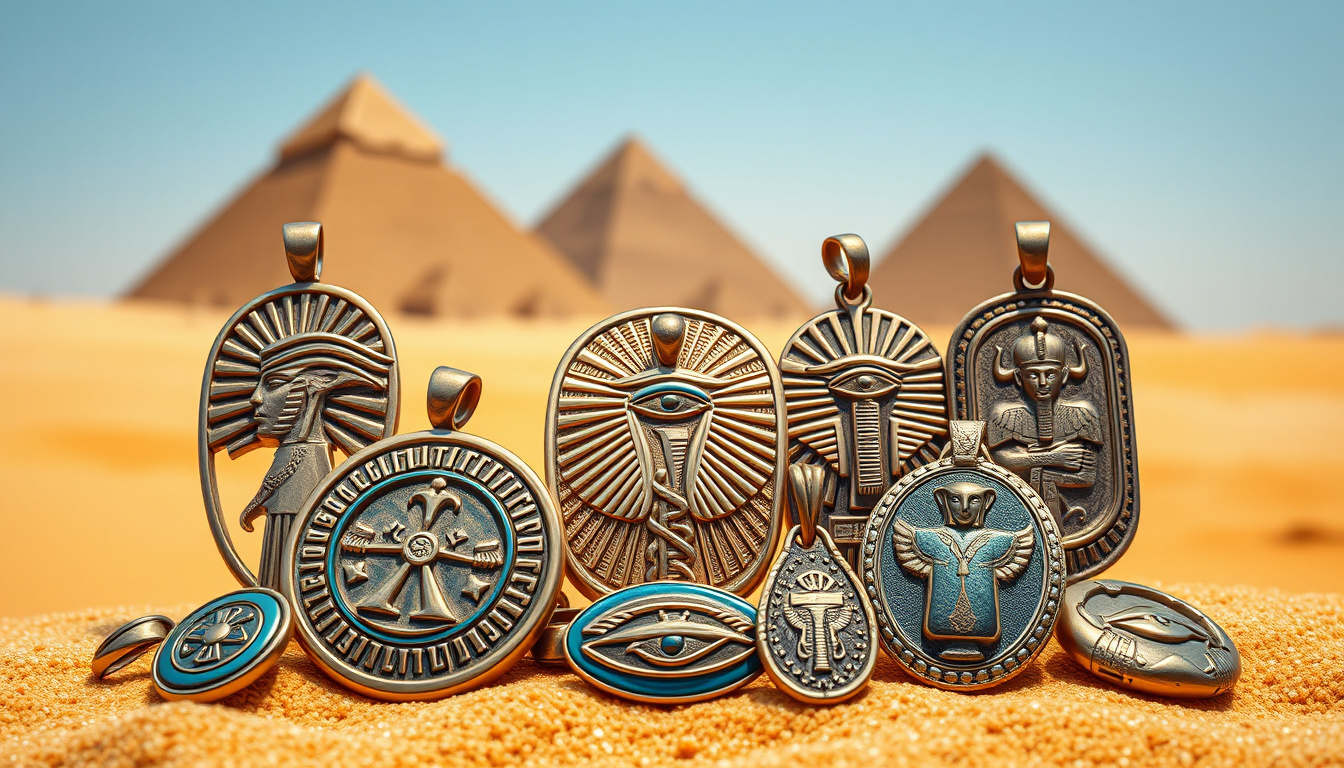Egypt, a country steeped in history and mystique, has long fascinated travelers and scholars alike with its ancient civilization and rich cultural heritage.
Among the many intriguing aspects of Ancient Egyptian culture are the amulets, small yet powerful symbols believed to provide protection and convey strength.
From the iconic eye of Horus to the scarab beetle, ancient Egyptian amulets served not just as ornaments but as tangible connections to the divine and the supernatural.
In this article, we will delve into the meaning of these amulets, the symbolism behind their designs, their relevance in Ancient Egyptian society, their place in modern spiritual practices, and the lasting impact they have on present-day beliefs.
Join us as we unlock the mysteries of these captivating artifacts that continue to enchant people around the globe.


The Role of Amulets in Ancient Egyptian Society
Ancient Egyptian amulets played a significant role in the spiritual and daily lives of people in ancient Egypt.
These small items, often crafted from materials like faience, stone, or metal, were designed to provide protection, bring good fortune, and ward off evil spirits.
From the humble worker to the mightiest pharaoh, nearly every individual wore or owned some form of amulet.
They were not merely decorative but were imbued with symbolic meaning and were believed to possess magical properties.
Popular designs included symbols of health, wealth, and safety, such as the ankh, scarab, and Eye of Horus.
In funerary practices, amulets were placed with the deceased to ensure safe passage to the afterlife and to protect against malevolent forces.
This importance is evident in tombs, where a variety of ancient Egyptian amulets were found alongside mummies, showcasing their widespread use across different classes and eras.
As such, examining these artifacts allows us to better understand the religious beliefs, cultural practices, and societal values of ancient Egyptian civilization.
Amulets in Modern Spiritual Practices
## Amulets in Modern Spiritual Practices
The fascination with ancient Egyptian amulets transcends time and continues to inspire modern spiritual practices.
These artifacts, steeped in rich symbolism and history, were believed to offer protection, health, and good fortune to their owners in ancient Egypt.
In today’s world, many spiritual practitioners and enthusiasts integrate these amulets into their rituals and everyday lives to tap into their perceived energy and meanings.
For instance, the scarab beetle, an iconic symbol of transformation and rebirth in ancient Egypt, finds its way into contemporary meditation practices.
People often wear scarab amulets as reminders of personal growth and renewal.
Additionally, the Eye of Horus is frequently used in modern spirituality as a protective symbol, believed to ward off negative energies.
As more individuals seek connections to their spiritual heritage, the revival and reinterpretation of ancient Egyptian traditions through these amulets exemplify a deep-rooted respect for the past while embracing their relevance in contemporary life.
 pyramids of Giza, take a moment to appreciate the fascinating history behind these ancient Egyptian amulets.
pyramids of Giza, take a moment to appreciate the fascinating history behind these ancient Egyptian amulets.
Their significance in daily life, as well as in burial practices, continues to captivate historians and archaeologists alike, serving as a reminder of the beliefs and traditions of a civilization that thrived thousands of years ago.
Today, they inspire a sense of wonder and curiosity, drawing travelers and enthusiasts to delve deeper into the mystique of ancient Egypt.
Frequently Asked Questions
What were ancient Egyptian amulets made from?
Ancient Egyptian amulets were typically made from a variety of materials including stone, glass, faience, and metal.
Common materials included turquoise, lapis lazuli, and carnelian, chosen for their beauty and perceived magical properties.
What symbols are commonly found on ancient Egyptian amulets?
Common symbols include the Eye of Horus (protection), the Ankh (life), scarabs (rebirth and protection), and various deities like Isis and Osiris, each representing different aspects of power and protection.
How were amulets used in ancient Egyptian society?
Amulets were worn or placed in tombs to provide protection, bring good fortune, and ensure safe passage to the afterlife.
They were often personalized to the owner’s specific needs and beliefs.
Do modern spiritual practices still use ancient Egyptian amulets?
Yes, many modern spiritual practices draw inspiration from ancient Egyptian amulets, incorporating them into rituals for protection and empowerment.
People may wear replicas or use images of these amulets in meditation and rituals.
What is the legacy of ancient Egyptian amulets today?
Ancient Egyptian amulets continue to fascinate people today, not only for their historical significance but also for their aesthetic appeal and symbolic meanings, inspiring jewelry designs and spiritual practices around the world.

